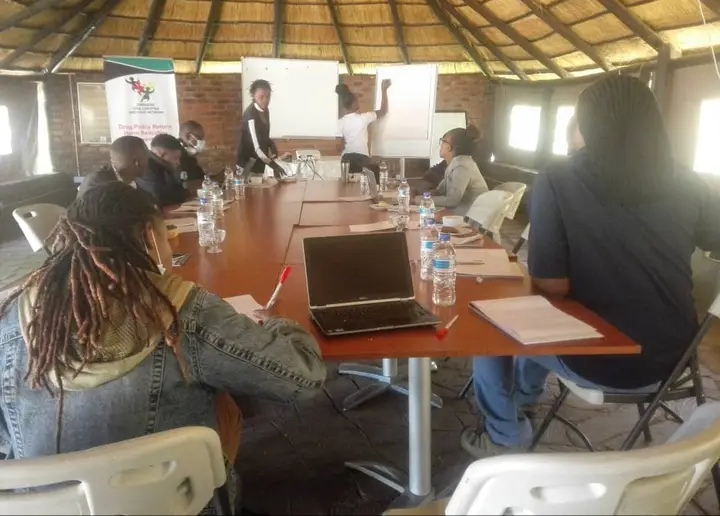
‘Sometimes the title of a work of art is centered simply on the major character in a story as you find in many of Shakespeare’s plays’
There are some book titles like Ai-Kwei Armah’s novel of 1968 called The Beautiful Ones are Not Yet Born, that are meant to make the reader in a bookshop get immediately hooked up to a book and buy it immediately! In this case the title is a catchy phrase which acts like the bait that tempts a hungry fish.
Seeing that sexy title for the first time in high school, I actually thought The Beautiful Ones are Not Yet Born was a love story! Expecting steaming romance, I dropped all the other chores and settled on it. But… I actually came face to face with a story about the naked sociopolitical realities of independent Africa! Not a single I-love-you word in there.
This is a novel about a man who navigates the morally compromised world of independent Ghana. The protagonist, known simply as “the man,” works at a railway office where one day he is offered a bribe from a merchant. He declines. When his wife hears about this, she is deeply displeased.
In this novel, African leaders are attacked for wanting to be like the former colonial masters. Therefore, the beautiful ones that are not yet born are the genuine leaders. The title is hinting that up until more careful leaders rise to power in Africa, as in Ghana, Africa will continue to be doomed.
Another catchy title is NoViolet Bulawayo’s We Need new Names. You look at the book and quietly ask yourself, why should we need new names when we already have names? Who is asking for these new names? Are our names wrong?
But when you get into the novel, you find out that Bulawayo's book of 2013, is actually a watershed novel on migration. The main character is an economic refugee from Zimbabwe to the US. She constantly delves into various mental states, trying to make sense of her not so smooth move from Zimbabwe to the US and the neighbouring regional countries.
NoViolet Bulawayo’s language, as in the blues, is both depressing and exhilarating. Her poesy is very articulate. It invites you to laugh and cry at the same time.
- July Moyo’s empire crumbles
- Inside the minds of serial killers
- Ceteris Paribus:Jacinda Ardern’s resignation
- History repeats itself
Keep Reading
This novel juxtaposes a tumultuous Zimbabwe against a well fed and technologically advanced America as seen by a young and impressionable Zimbabwean girl. Darling discovers that Zimbabwe and America are worlds with two very different passwords.
What Zimbabwe does not have materially, America offers but not for free! Closely looked at, America offers its own kind of turmoil to those (like Darling) who do not want to be second class citizens and who constantly claim that they have somewhere ‘my country, my people, our President, our language’ and other things.
You ultimately discover that the main character needs a new name only in the context of having to quickly redefine home against a faraway place.
There are suggestions that suffering tends to make people see themselves differently, if not in a clearer way. The novel constantly begs the reader to ask, who am I in the midst of questing for new geographical and mental definitions.
Then you also find that there are certain titles with a firm sense of geography. Their setting is overwhelming and it becomes the fulcrum of the story.
Such titles have an enduring sense of place. One such title is Miguel Street.
VS Naipaiul’s Miguel Street, published in 1959, is set during World War II on Miguel Street located in Port of Spain, the capital of Trinidad and Tobago.
Naipaul was in London in 1955 when he conceived and wrote these linked short stories.
Although each story in Miguel Street is individualised, the setting is Port of Spain. The characters tend to be tragicomic, striving to attain some goals which are too high to be attained by them. They end up in trouble or are thoroughly disappointed. They want to escape from themselves or the island.
In these stories, Naipaul explores the idea that the Caribbean and particularly his home island and its people are desperate for an identity. His characters struggle for that all the way.
Bogart appears in most of these short stories. His real name remains unknown. He is Bogart, a name of an American film called Casablanca.
Sometimes he is called Patience, the name of the game that he plays. Bogart dramatizes the feeling of instability and insignificants of the Caribbean people who are found aping foreign people and foreign heroes.
One day he tells his playmates that he is going to the toilet and is coming back soon, but he actually disappears for months! The boredom in Bogart’s life reflects a deep lack of purpose. The ennui around him is palpable as shown here:
“Whats happening there, man?” he would ask quietly, and then he would say nothing for ten or fifteen minutes. And somehow you felt you couldn't really talk to Bogart, he looked so bored and superior. His eyes were small and sleepy. His face was fat and his hair was gleaming black. He was the most bored man I ever knew…
His “acting big” at least shows a certain yearning for real achievements which people in these post slavery societies cannot sustain. Asked by a friend why he commits bigamy, Bogart answers, “To be man, among we men.”
In the final story called “How I left Miguel Street,” the narrator finally leaves because his mother realises that there is little to achieve on the island and he is getting too wild. Once he stays drunk for two consecutive days!
At the airport during his departure, the narrator’s shadow is described as “a dancing dwarf on the tarmac.” He does not look back as he goes to the plane. He can be compared to Trumper in George Lamming’s novel, In The castle Of My Skin, who leaves the islands in a similar fashion.
Sometimes the title of a work of art is centered simply on the major character in a story as you find in many of Shakespeare’s plays. The named character drives the story due to his strengths or weaknesses or both.
Through the character of Macbeth in the play Macbeth, we learn about the struggle between illusion and reality alongside the essence of human nature as Macbeth struggles to gain power and his eventual fall.
Through King Lear in the play King Lear, we learn that a lack of self-knowledge can cause chaos and tragedy, but the play also suggests that self-knowledge is painful, and perhaps not worth the effort it takes to achieve it. Lear's tragic flaw is a lack of self-knowledge.
Then there are some one-word titles which tend to help the reader dwell, for the most part on the major theme in a book. Chenjerai Hove’s novel of 1996 is simply called Ancestors.
At the centre of Hove’s somewhat beautifully dense novel, Ancestors, is the indefatigable figure, Miriro. She is at the time of the story, a female ancestor, who was born and had lived deaf and dumb herself.
She dies tragically when she hangs herself because she had been forced to marry a local drunkard. Although long gone, Miriro, through Mucha, a female predecessor (who is not deaf and dumb), now sees and recalls the past before her own birth, after her birth and after her tragic death. Miriro appears to Mucha in dreams and sometimes in some kind of trance akin to spirit possession. These ancestor characters weave their ways around the major character.
The same goes for Ferdinand Oyono who simply titles his work, Houseboy. In that novel from Cameroon in the colonial days, an African boy, Toundi has fled down the path of assimilation, leaving his village for missionary school, then working for the Commandant, becoming the chief European’s houseboy. Although in becoming the priest's houseboy, Toundi gave up his tribal identity, he finds that he will never fit in among the colonizers. He can only be a houseboy. Soon they beat him up to near death because of his poor judgments.
Indeed, titles are key to any work of literature because it is the title that we see first before we are able to ‘see’ the story itself.
About the reviewer
Memory Chirere is a Zimbabwean writer. He enjoys reading and writing short stories and some of his are published in Nomore Plastic Balls (1999), A Roof to Repair (2000), Writing Still (2003) and Creatures Graet and Small (2005). He has published short story books; Somewhere in This Country (2006), Tudikidiki (2007) and Toriro and His Goats (2010). Together with Maurice Vambe, he compiled and edited (so far the only full volume critical text on Mungoshi called): Charles Mungoshi: A Critical Reader (2006) His new book is a 2014 collection of poems entitled: Bhuku Risina Basa Nekuti Rakanyorwa Masikati. He is with the University of Zimbabwe (in Harare) where he lectures in literature. Email: [email protected]










